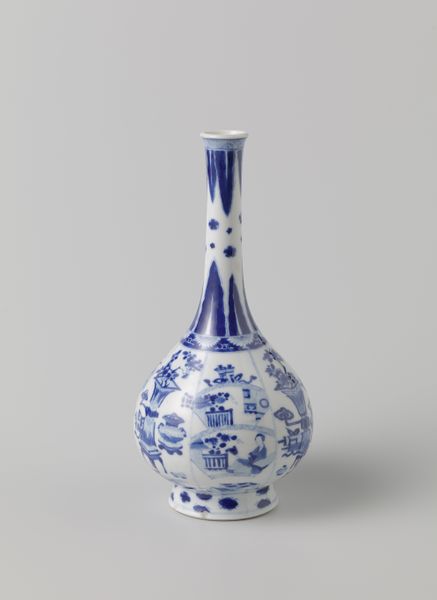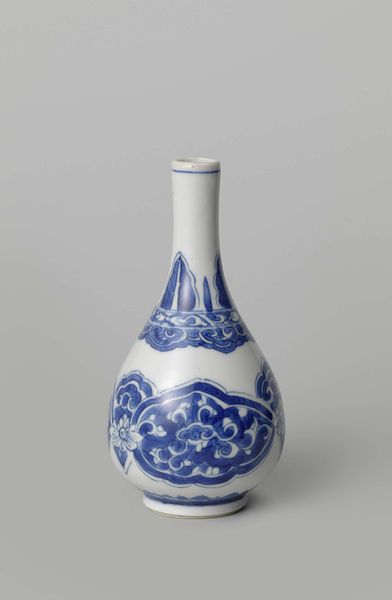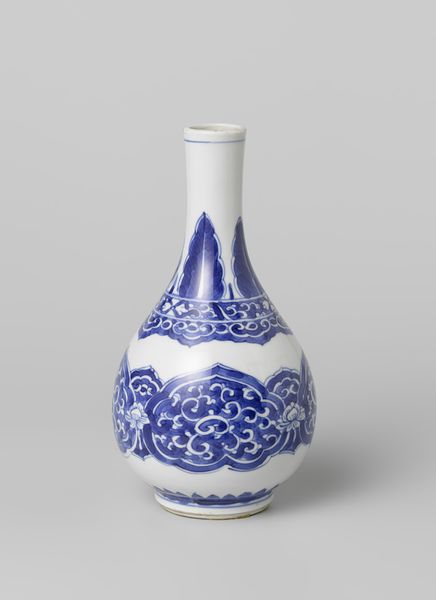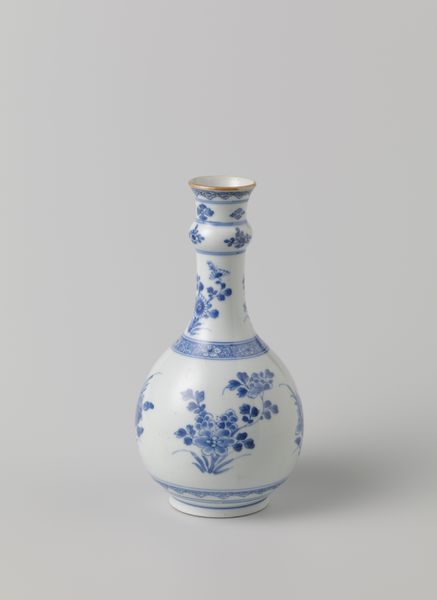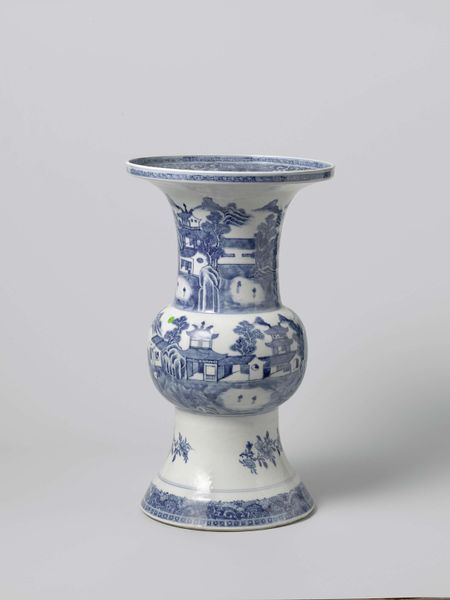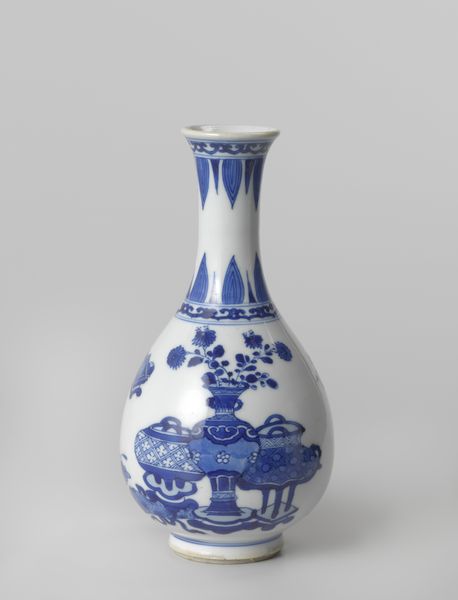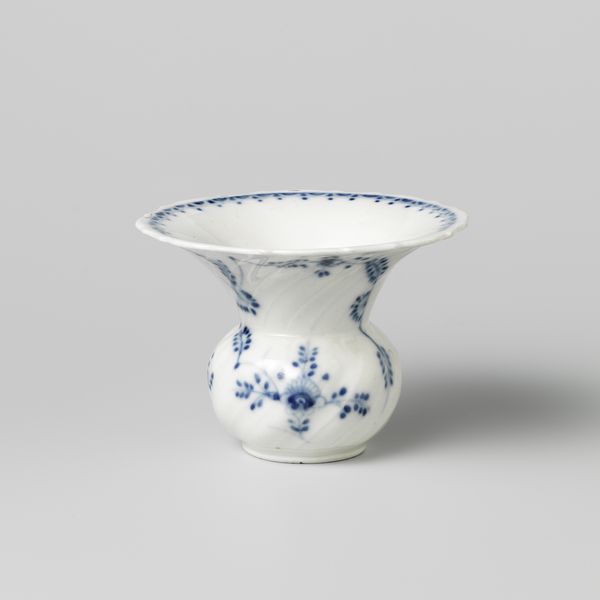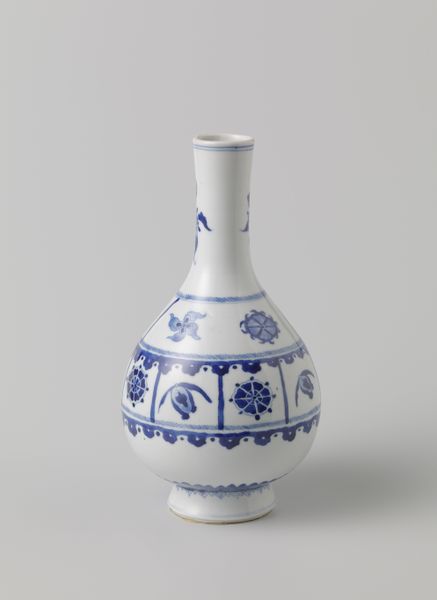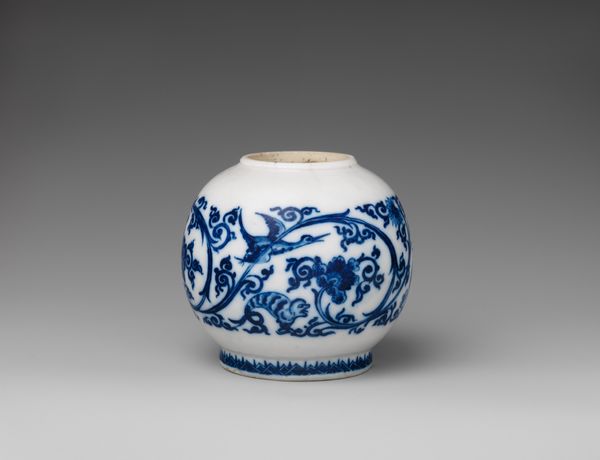
Rosewater sprinkler or bottle vase with flowering plants near a rock c. 1680 - 1720
product photograph merchandise
product studio photography
circular oval feature
egg art
3d printed part
product fashion photography
round design
retro 'vintage design
ceramic
disk design
Dimensions: height 18.2 cm, diameter 1.1 cm, diameter 7.9 cm, diameter 5.1 cm
Copyright: Rijks Museum: Open Domain
Editor: Here we have an exquisite rosewater sprinkler or bottle vase with flowering plants near a rock, created anonymously between 1680 and 1720. Its ceramic form is visually striking. What do you see in this piece from a formal perspective? Curator: The immediate allure lies in the juxtaposition of shapes: the bulbous body, contrasted with the elongated, almost ethereal neck. Notice the delicate interplay of positive and negative space created by the blue floral motifs against the stark white porcelain. How do these contrasting elements influence your reading? Editor: I see a deliberate contrast, making the form dynamic. The eye is constantly moving, guided by the painted flora. It is almost a study of dualities: rounded versus linear, empty versus decorated. Curator: Precisely. Consider also the use of colour. The cobalt blue isn't merely decorative. It serves as a structural element, defining contours and creating a sense of depth despite the two-dimensional nature of the painted surface. What compositional techniques stand out? Editor: The repeated floral patterns provide visual rhythm, and the way they're distributed seems to balance the weight of the vase, connecting its distinct parts. The artist achieves harmony despite using contrasting forms and blank space. Curator: Indeed, the harmonious arrangement is not accidental. The artist masterfully navigates visual tensions, resulting in a piece that’s both ornamental and structurally sound. By looking closely, we gain insights into their intention to explore balanced forms. Editor: Thinking about the balance achieved purely through composition deepens my appreciation for the vase. Curator: And for my appreciation too; I often neglect considering the emotional impact a composition brings to a piece of this kind.
Comments
No comments
Be the first to comment and join the conversation on the ultimate creative platform.
